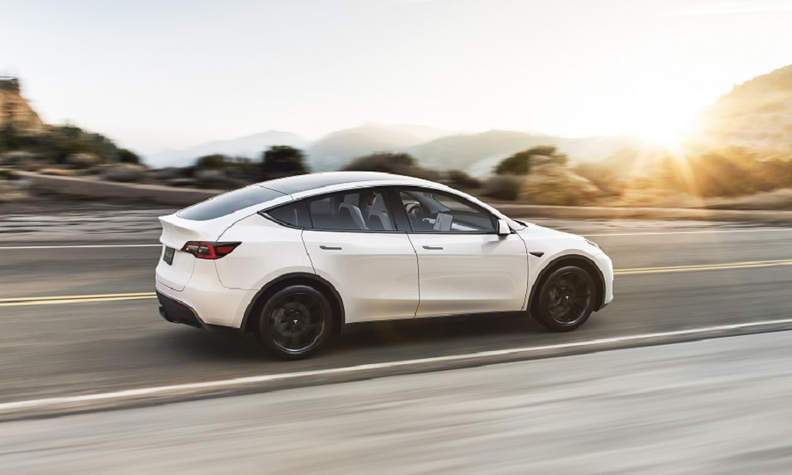Tesla to use cheaper LFP batteries in small EV, truck
An image of the Tesla Semi heavy truck. CEO Elon Musk says it will use lithium iron phosphate batteries, which are less expensive than other lithium ion cells, in a short-range version called Semi Light.
SAN FRANCISCO — Tesla said it plans to expand the use of cheaper, iron-based batteries to a version of its Semi heavy electric trucks and an affordable electric vehicle.
Tesla CEO Elon Musk has championed the lithium iron phosphate (LFP) battery technology dominated by Chinese suppliers, saying in March, “the vast majority of the heavy lifting for electrification will be iron-based cells.”
But having Chinese suppliers build battery factories in the Unites States is a challenge because of the U.S.-China political tensions.
The world’s biggest electric carmaker said in its paper on Master Plan Part 3 released on Wednesday that it will use LFP batteries for “short-range” heavy electric trucks, which it calls “Semi Light,” without providing details such as a launching date.
Tesla last December started to deliver its Semi electric trucks with a longer, 500-mile driving range per charge and which use nickel-based batteries. Tesla has previously said it will also launch a 300-mile range version.
The automaker said its proposed small electric vehicles will use LFP batteries with capacity of 53 kilowatt-hours, versus 75 kWh for Model Y and Model 3.
Tesla said last month that it will cut assembly costs by half in future generations of cars, which will be built at its factories in Mexico and elsewhere.

The midsize Model Y SUV will eventually have LFP batteries, Elon Musk said, but he did not offer other details.
Model 3, Model Y to get LFP tech
Tesla said it will also use LFP batteries in its mid-sized vehicles, Model 3 and Model Y, without giving a timeline.
Currently, Tesla uses nickel-based batteries for most of its Model 3 and Model Y vehicles sold in the United States.
Musk and other LFP advocates cited the abundance and cheaper prices of iron as a key factor outweighing the drawbacks that have held back the adoption of LFP cells globally. They are bigger and heavier, and generally hold less energy than nickel-based cells, giving them a shorter range. LFP cells also tend to pose less of a fire risk than nickel-based cells.
Tesla currently sources LFP batteries from China’s Contemporary Amperex Technology (CATL), which does not have a factory in the United States. Tesla’s South Korean supplier, LG Energy Solution, said it plans to build LFP batteries at its proposed Arizona factory.
